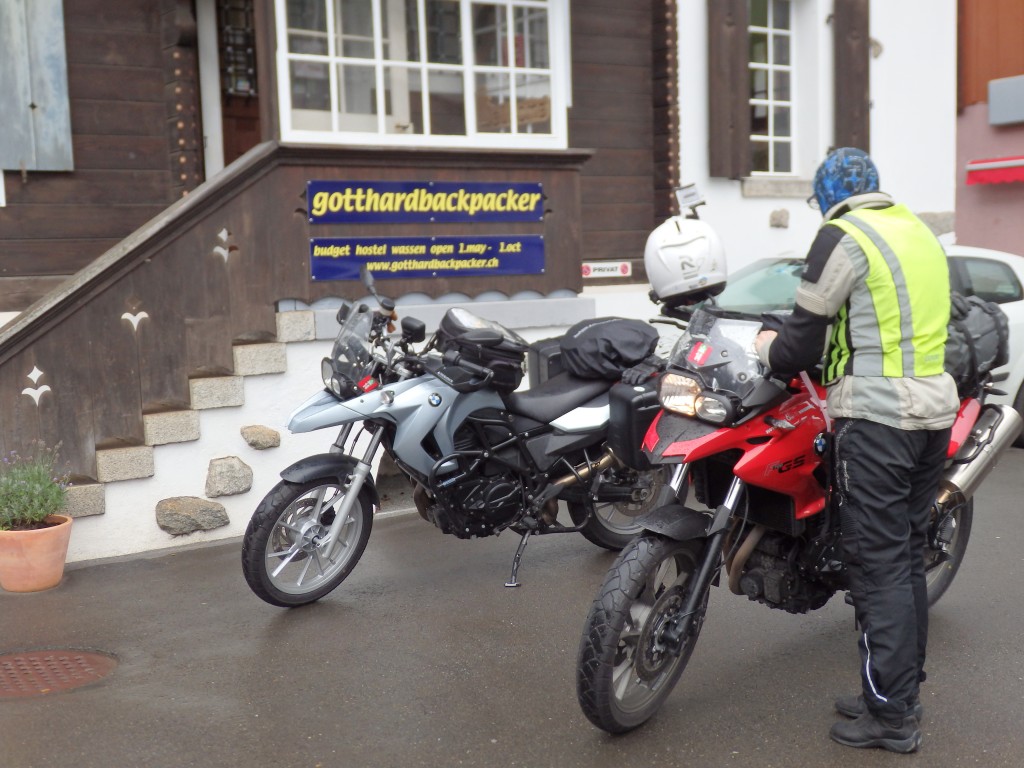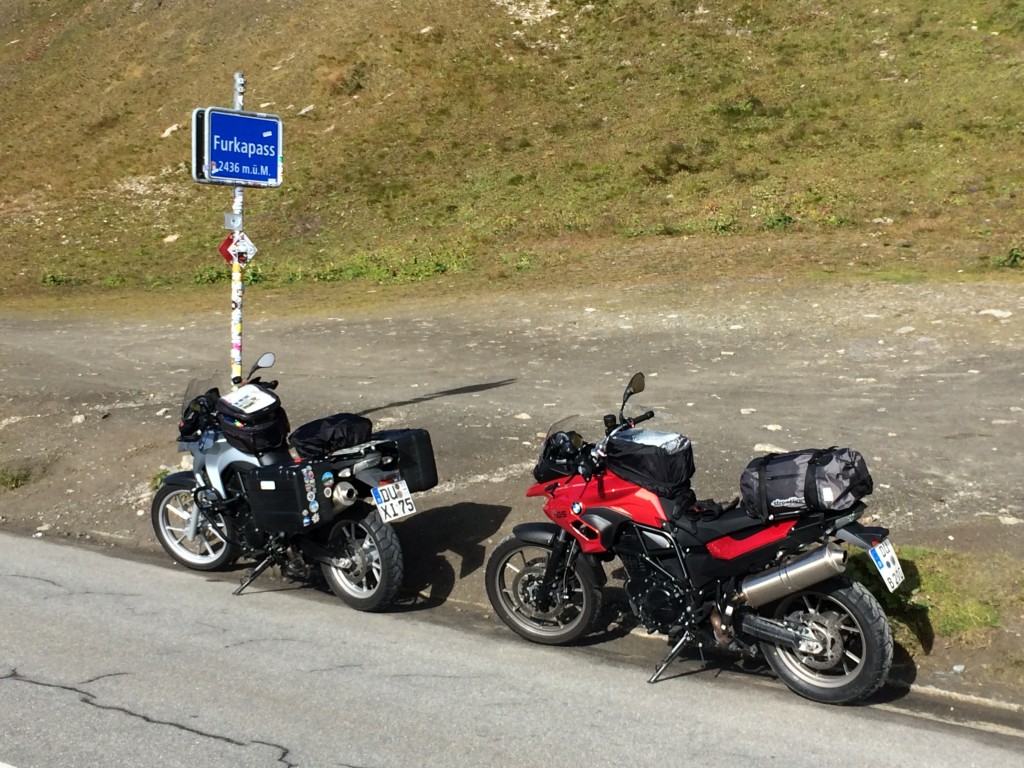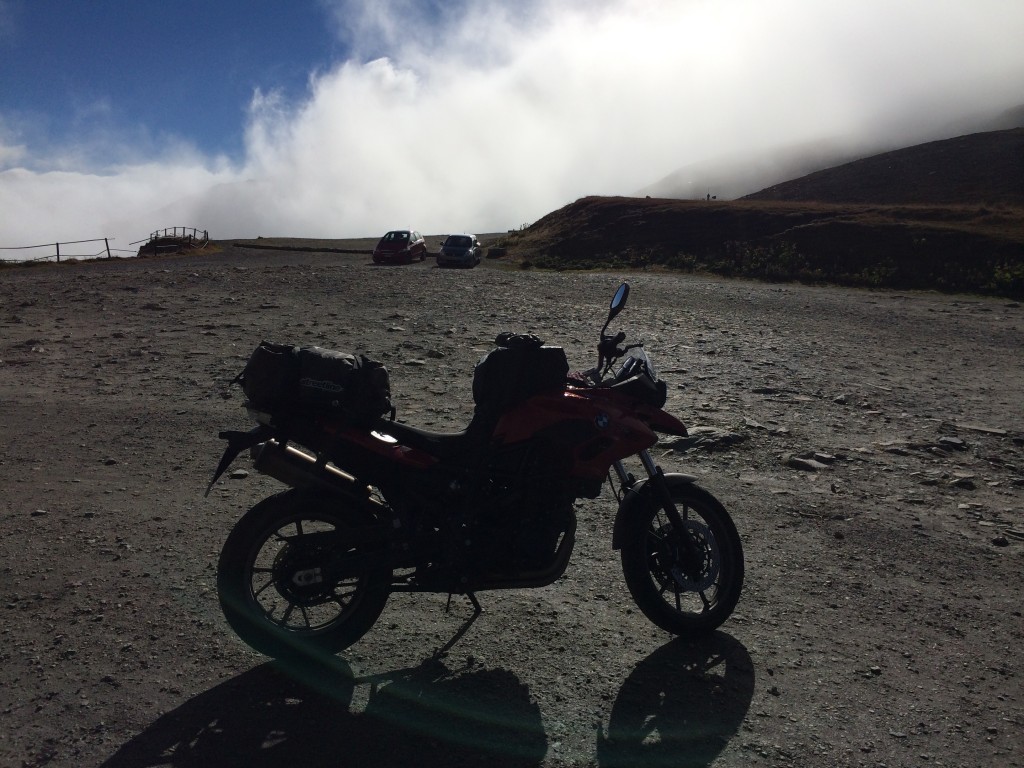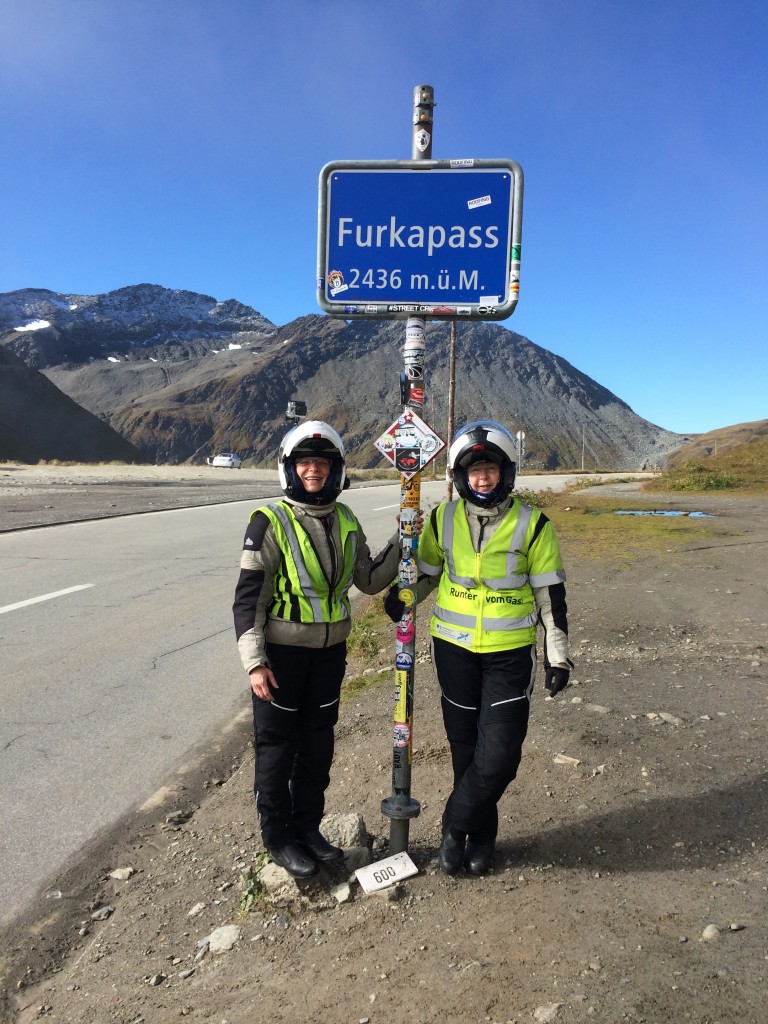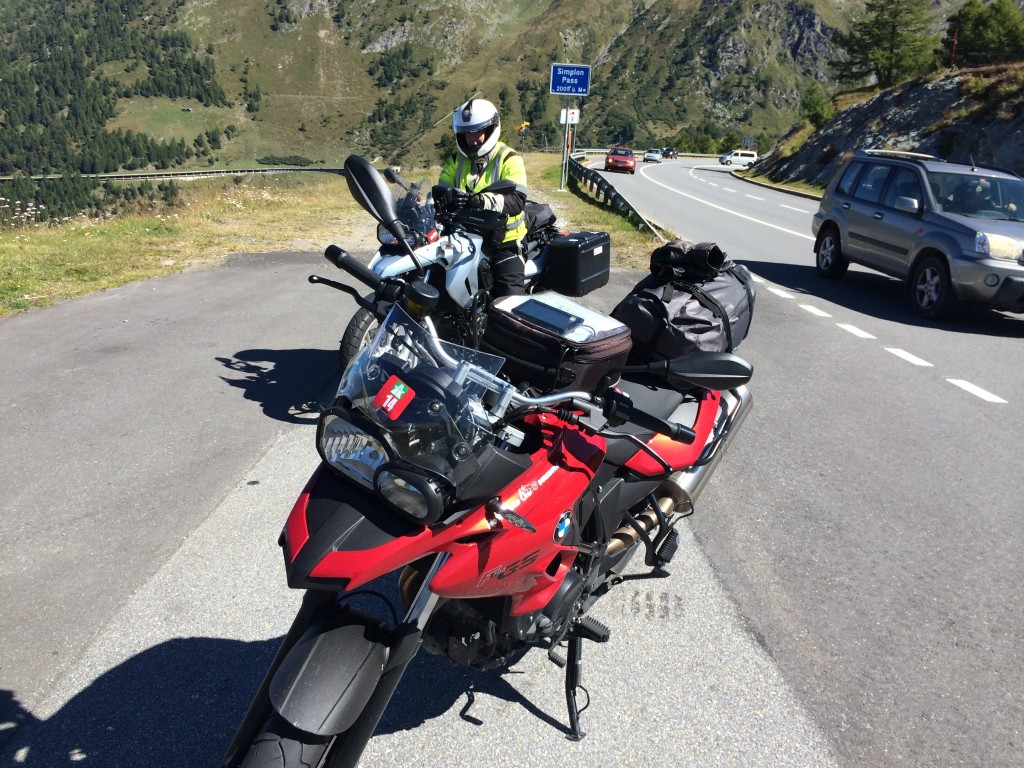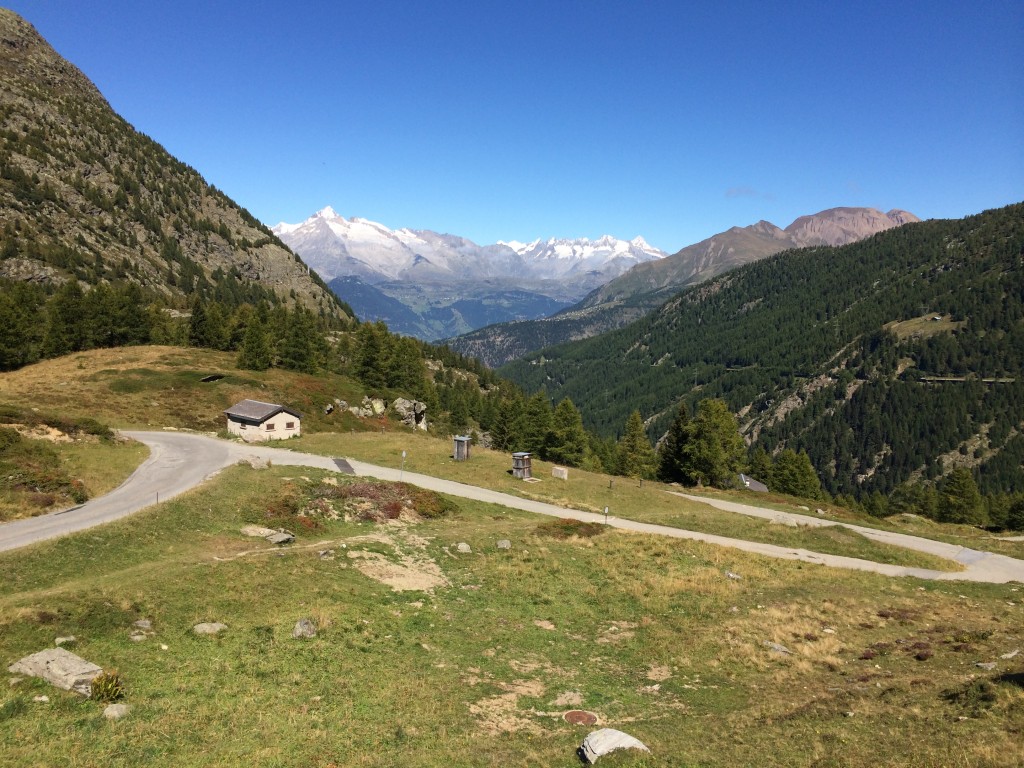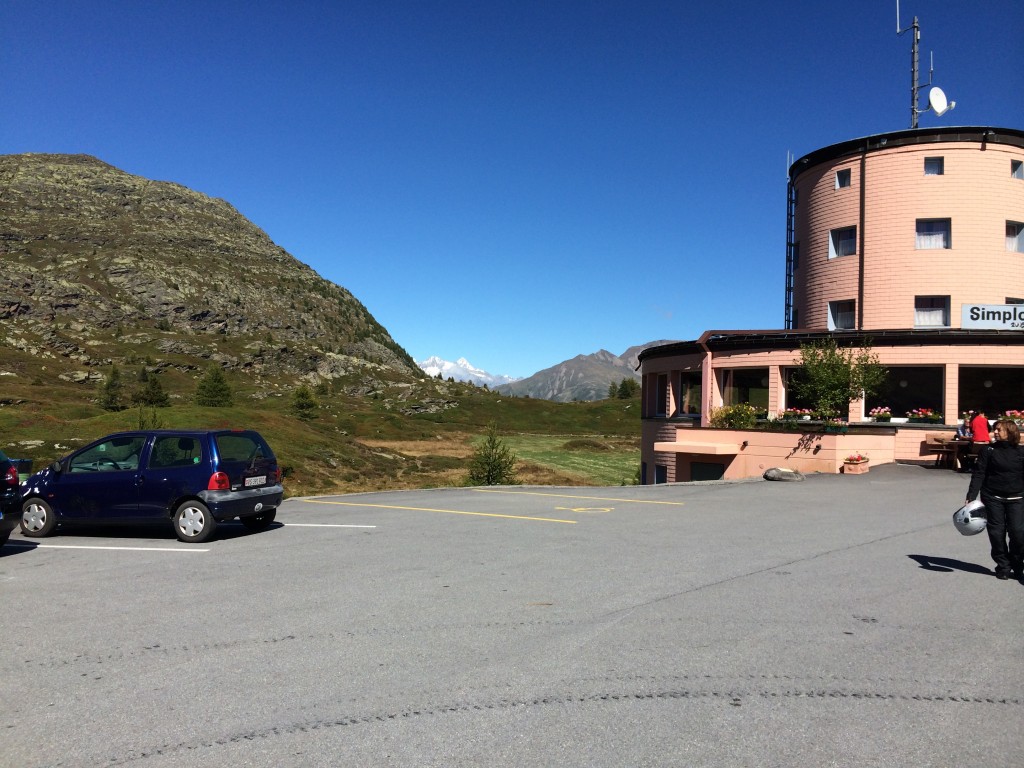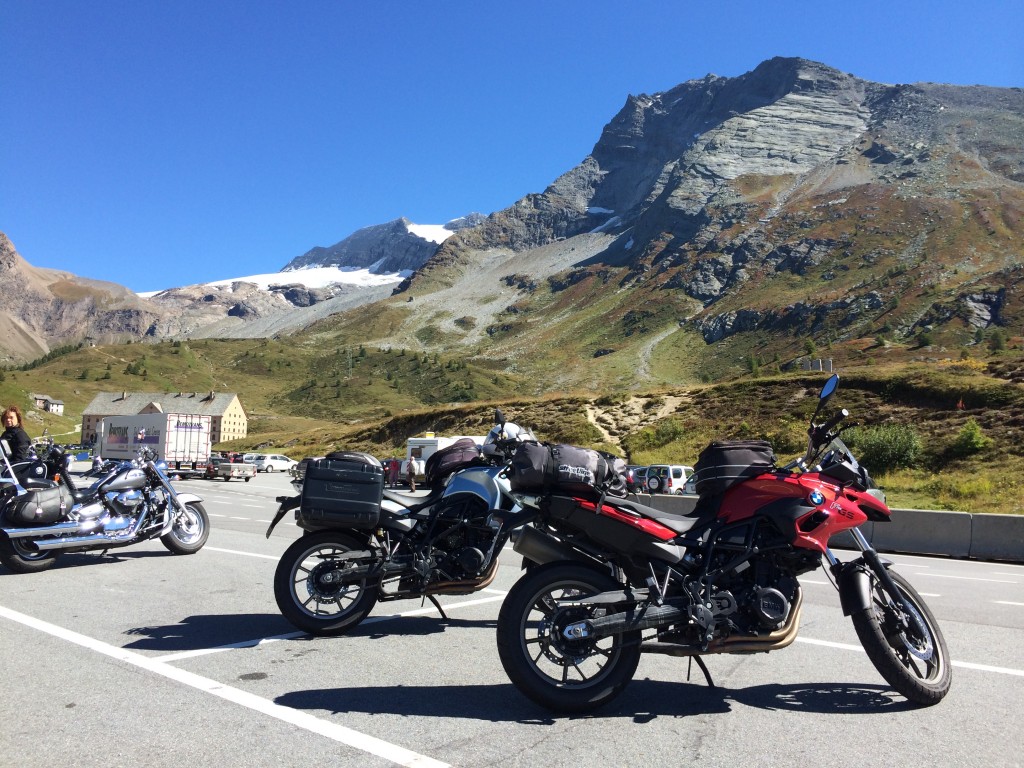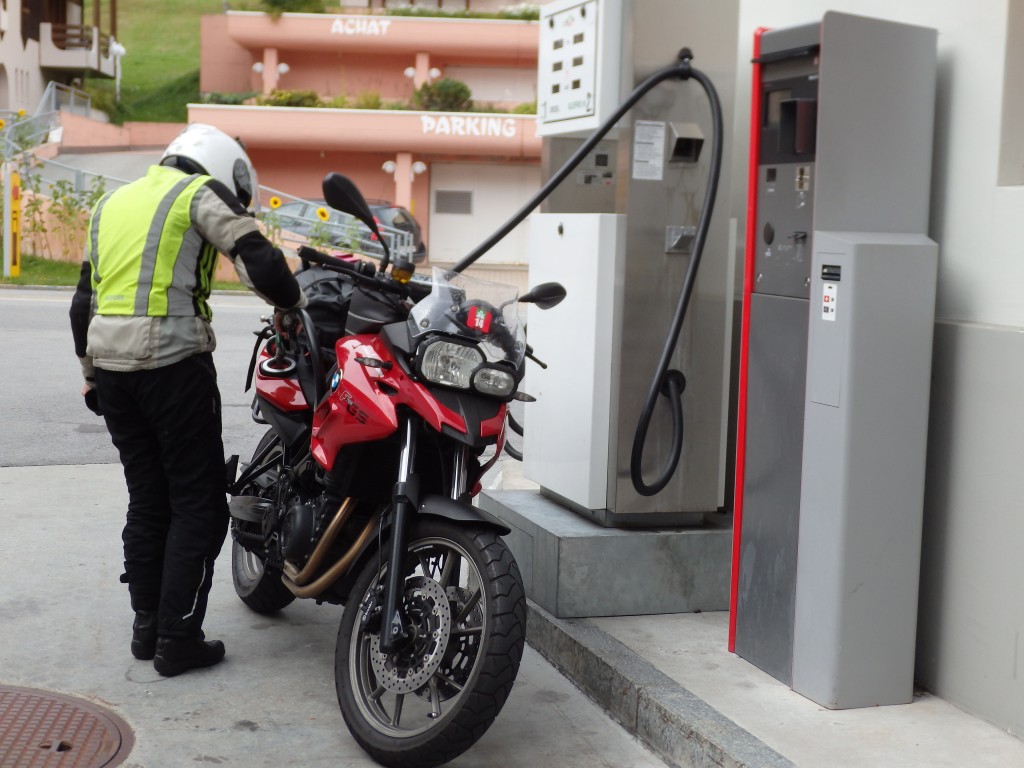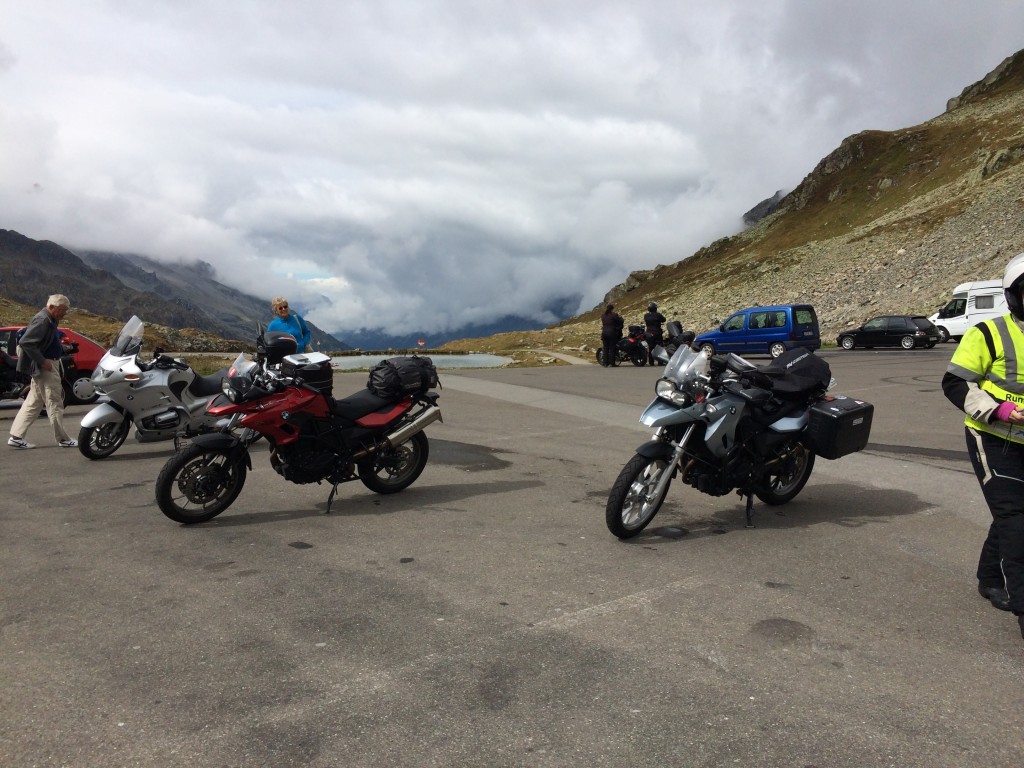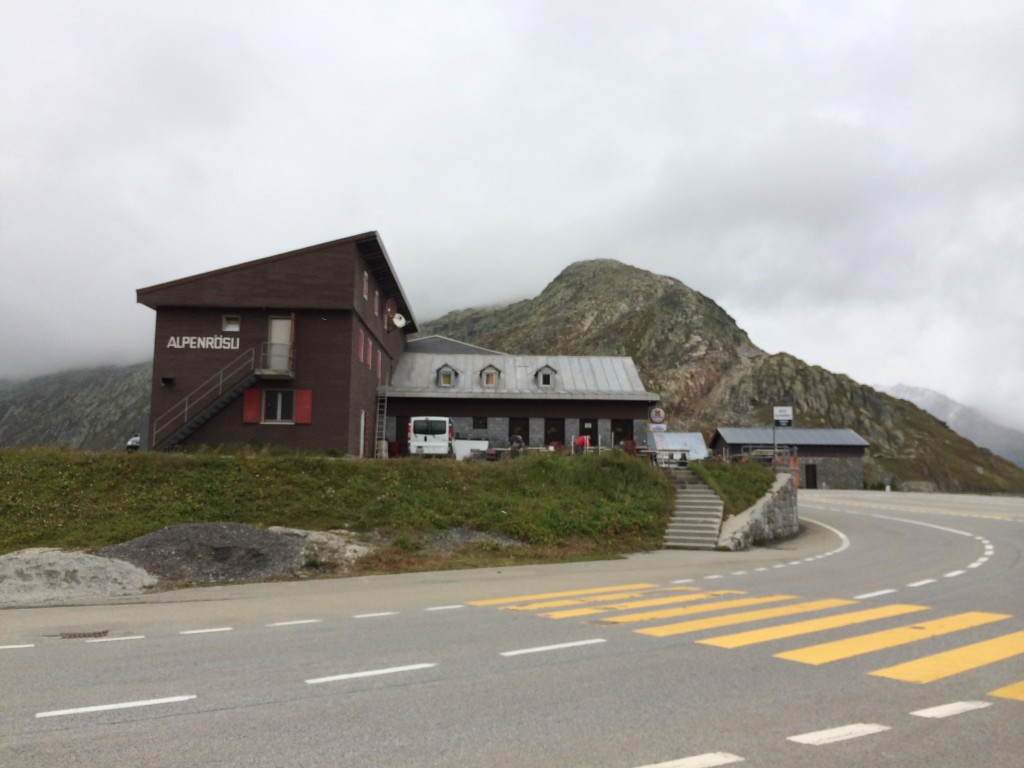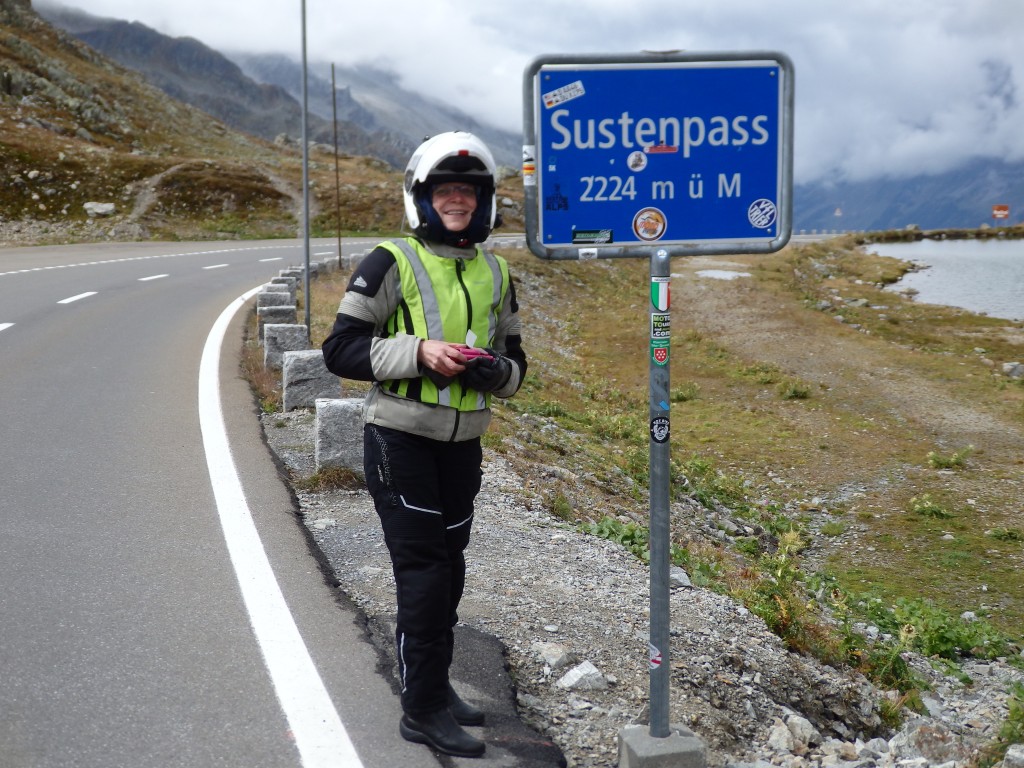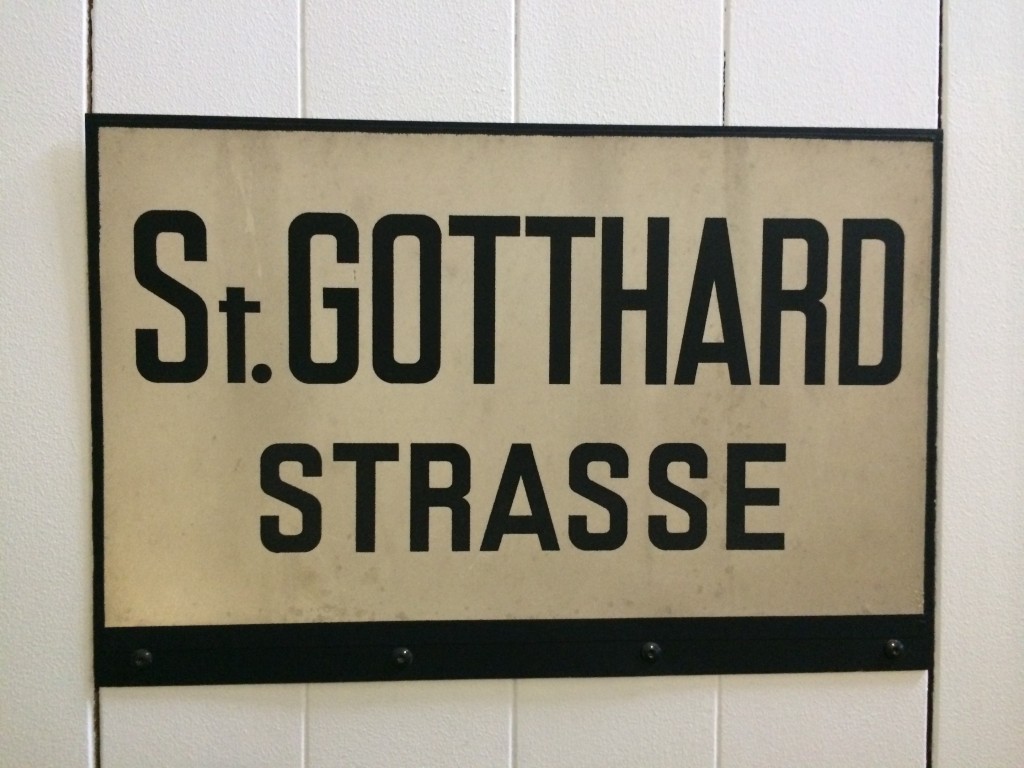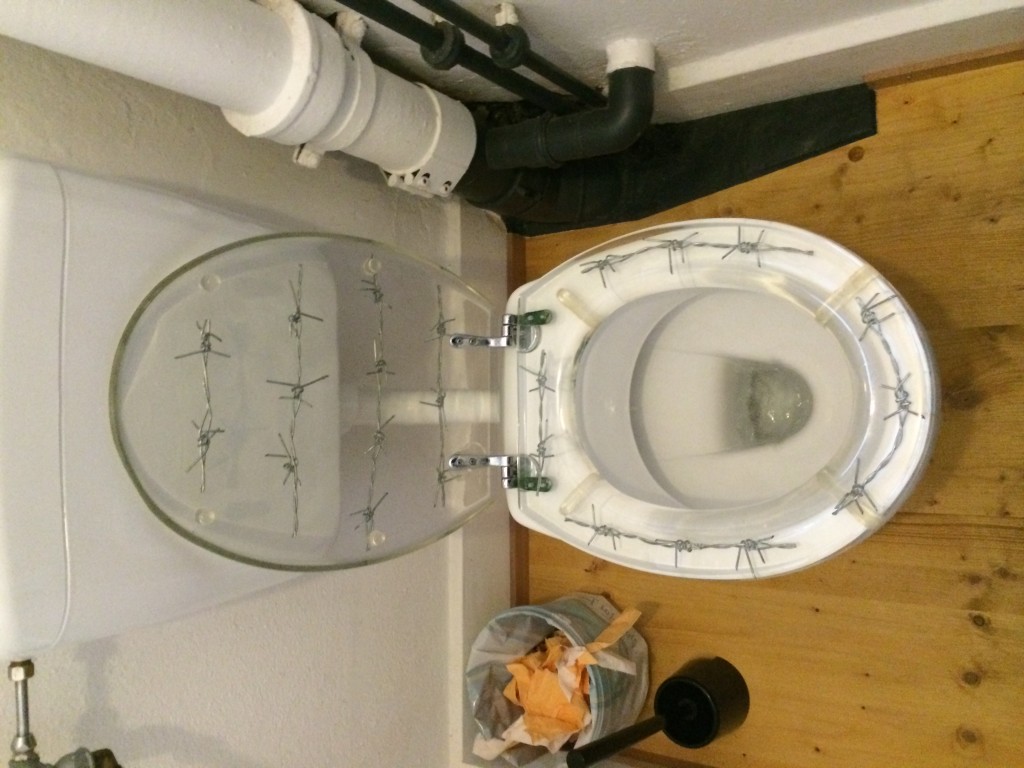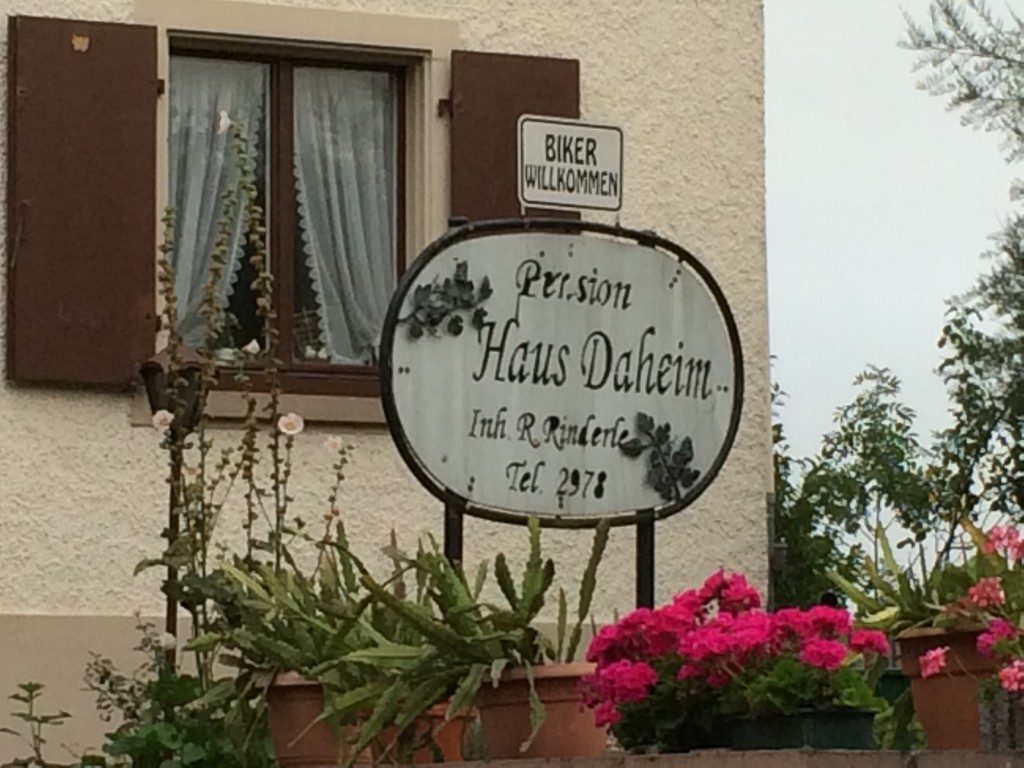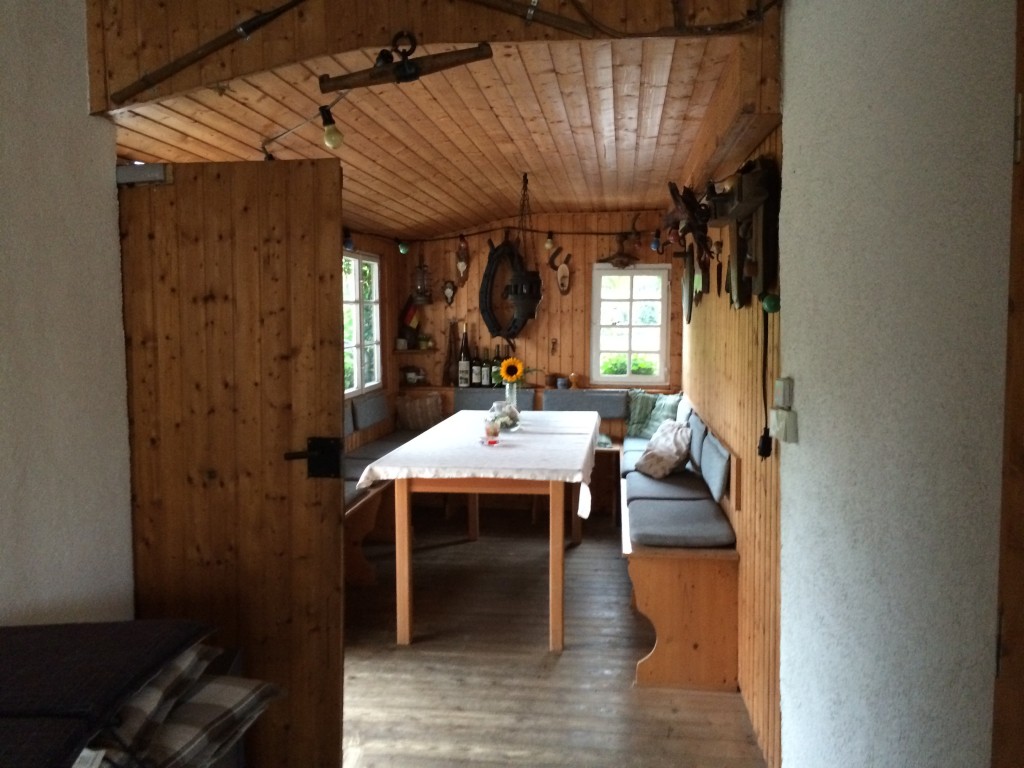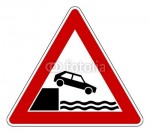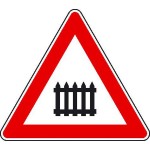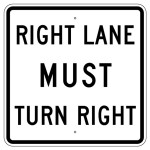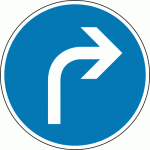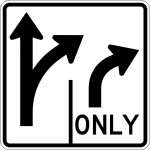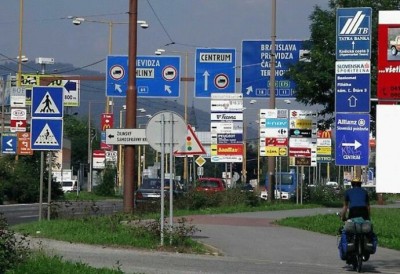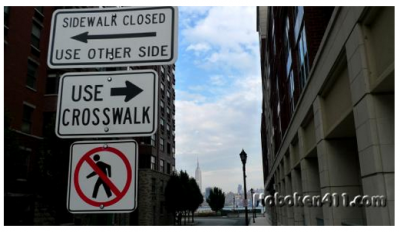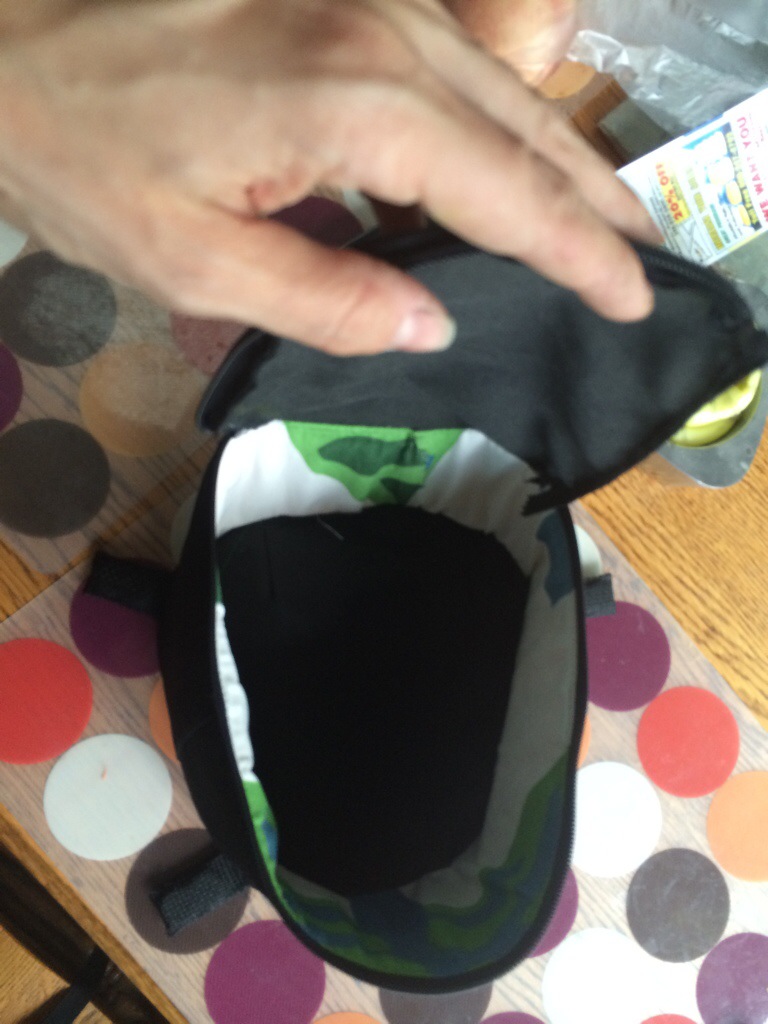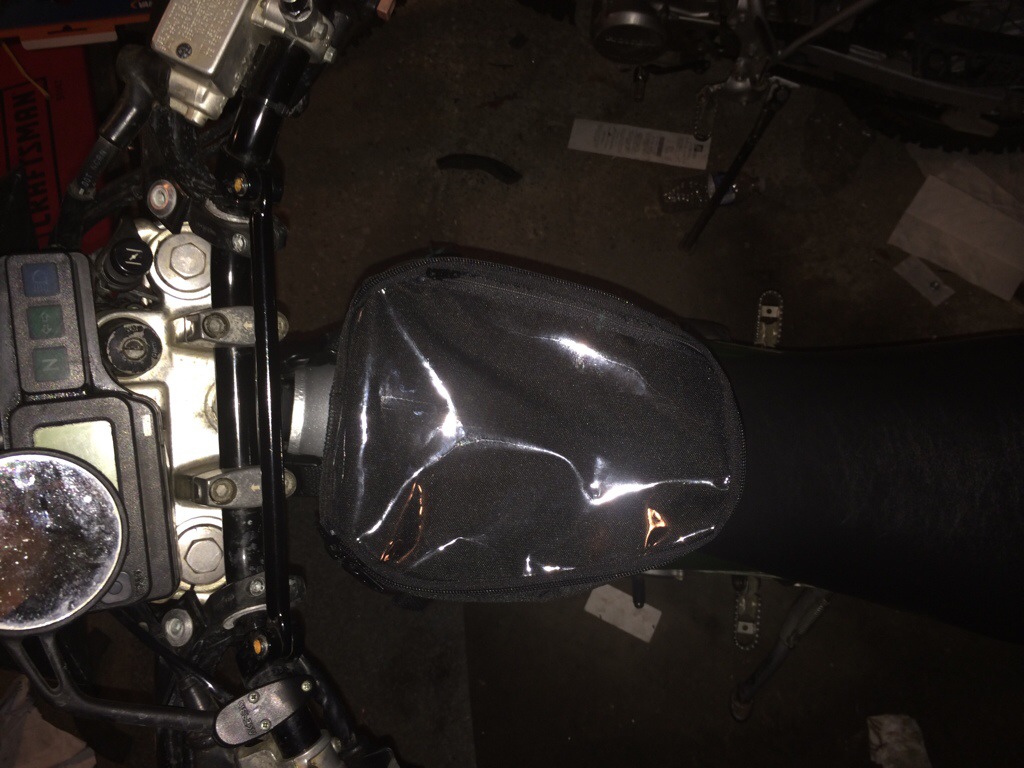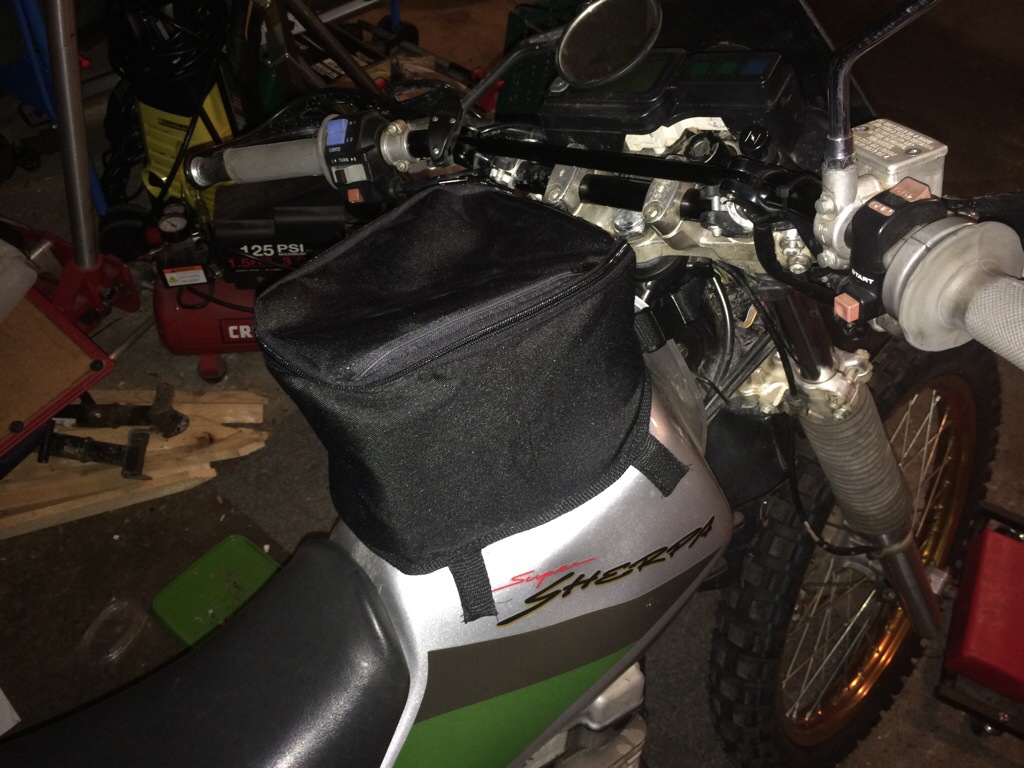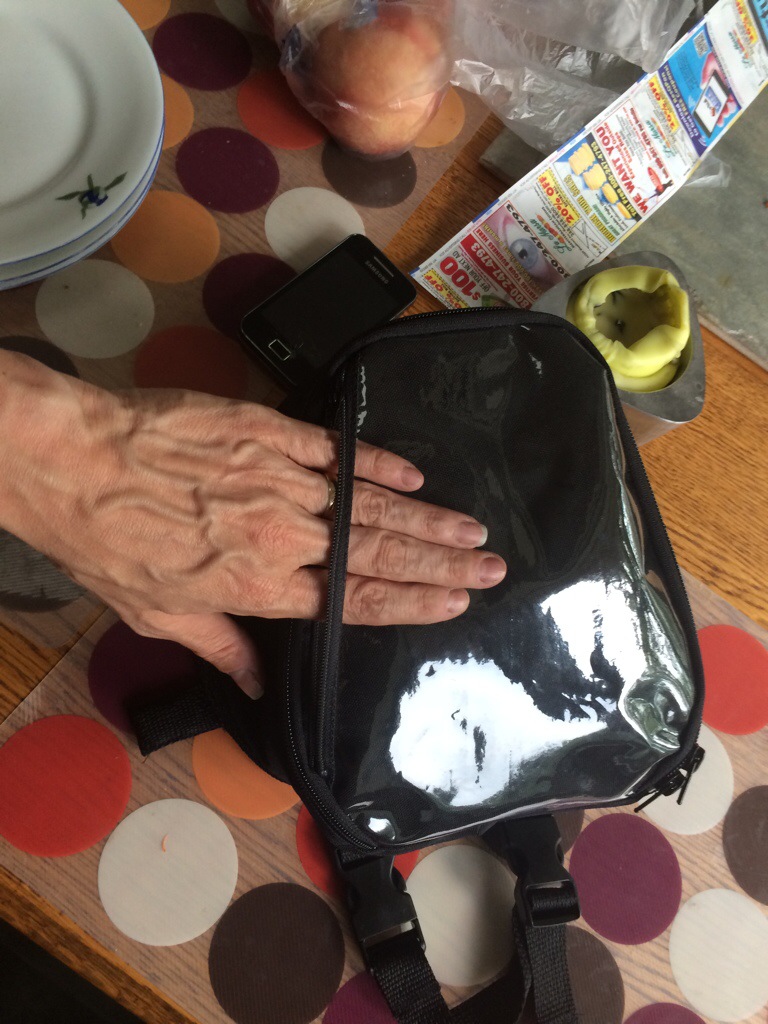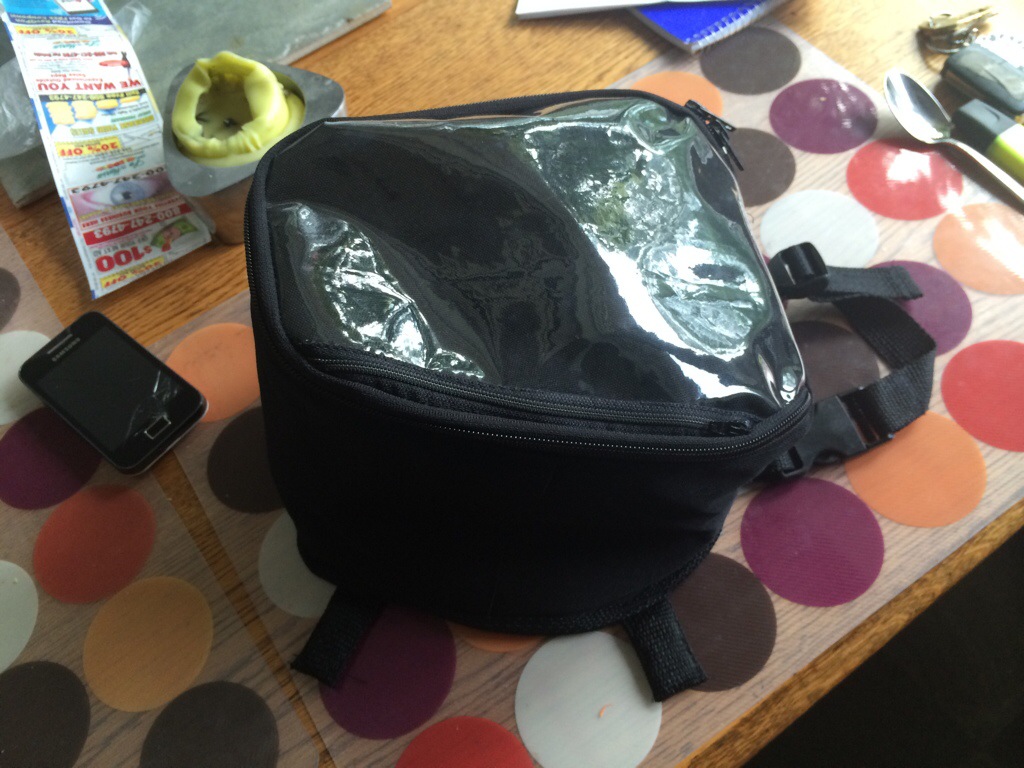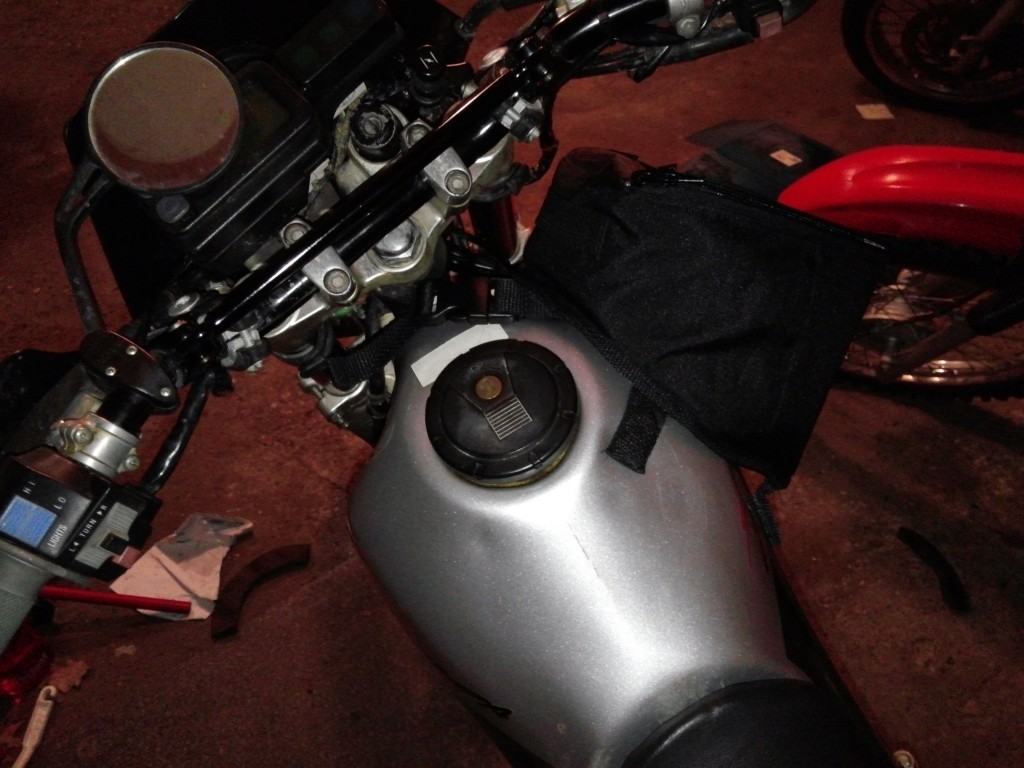Leaving Wassen, we get a good indicator of the weather we can expect for most of the trip. Sankt Gotthard is called the Weathermaker for a reason – but better said in German – der Unwettermacher. We have more rain. Super.
Regardless, it is time to head on over to the Furkapass. Famed for its appearance in Goldfinger, it’s a beat-up, often single-lane stretch that has some truly rewarding views. Armco is completely missing, the only side securements are the electric fences used to keep the sheep and cows off the road. Given a weekend to ride, I would consider riding the loop of Furka, Nufenen, and Sankt Gotthard over and over and over. Three wonderful and unique passes that have a ton to offer any moderately experience rider. Furka brings us up into the clouds again and over the tops, where we are greeted by warm sun.
Just as Furka is visible from Grimsel, the curves of Grimsel are visible from Furka. The road to the left is the lower southwest ramp of Furka. On the way down, there is a marker for the Rhonegletscher, one of the sources of the Rhone river. We periodically see the Furkabahn, an old steam cog railway that brings cars and people through the passes.
We follow the 19 south to Brig and turn onto the 9, the Simplonstrasse. Agatha Christie’s Murder on the Orient Express takes place on what is actually called the Simplon-Orient Express, a very real train route that brings travelers south to the sunny beaches of Italy. The nearly 20km long Simplon tunnel houses the tracks, along with a rail car service that carries cars and persons through in 20 minutes. Hmmm. Not for us. We have different tunnels to take, the long and elegant avalanche galleries that make up most of the northern ramp of Simplon. We go over the top, again to find sun and warmth. We tuck into our breakfast leftovers for lunch, and then head southward to Domodossola, Italy. Regrettably for me, this will turn into the start of a nagging gut problem that will eventually cost me one and a half riding days and quite a few euros.
From Domodossola, we continue south on Italy’s A62 in pursuit of the Italian coastline. Italy’s Autostrada system is well-built, with hundreds of short tunnels to carry traffic easily through the mountains. Tolls are handled with tickets, similar to the usual turnpike ticket in the US. We are both a bit tired and I am puffing up like a balloon from the cheese. We stop for a bit near Praolo so that I can deflate myself. It’s warm and sunny and we are baked like cookies. From there, we head south to Alessandria and Nove Liguri. We find a hotel after some fussing – Italy is not as well-organized as the German-speakers up north are – and a couple of dead ends. The hotel Gambero d’Oro is thankfully open and willing to host two ladies on motorbikes. Dinner is outstanding northern Italian fare. I have keyed in on milk being an issue, but not yoghurt.

